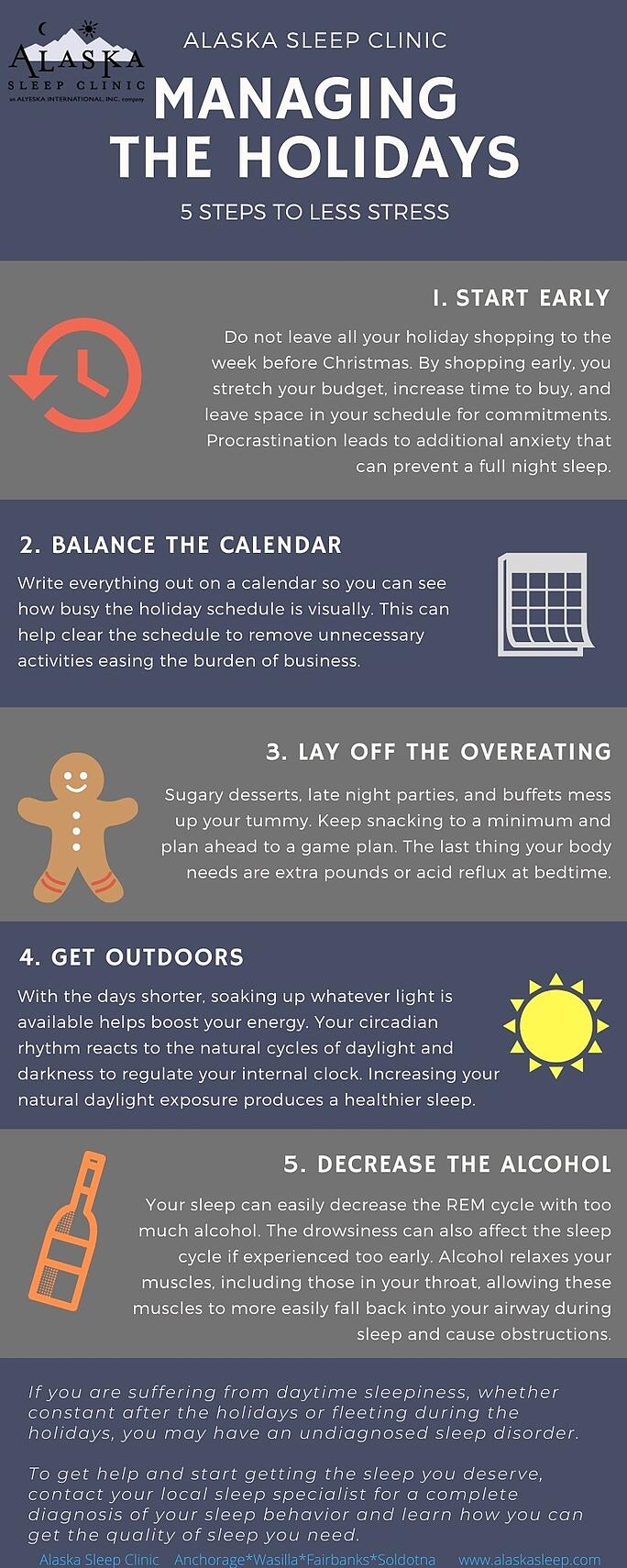7 Ways to Live with Your Partner’s CPAP Machine
If your partner has sleep apnea, then this scene is probably painfully relatable for you. Heavy wheezing, a hurricane blowing straight into your face, and zero opportunity to snuggle are just a few struggles any CPAP partner understands.
For anyone newly diagnosed with sleep apnea, learning to sleep with a CPAP mask can seem like a daunting challenge. From finding a comfortable mask to retraining your body’s natural sleep position, it’s no wonder patients are resistant to their treatment.
No matter how challenging, however, it’s important to fight through that readjustment period and stick with the treatment. The benefits of treating sleep apnea are undeniable. Not only will you have more energy in the day with a full night’s rest, but you’ll also increase your body’s physical repair from deep sleep and drastically reduce your risk of hypertension and cardiovascular disease.
Here at Alaska Sleep Clinic, we constantly post the best sleep apnea advice, and our blogs “4 realities of life with sleep apnea and living with your CPAP Machine” and “Sleeping with A CPAP Mask: Problems, Concerns, and Solutions” can help you get started on your CPAP therapy journey.
What’s often not considered, however, is how partners are also challenged with a machine in the room. In our blog “8 Reason to Get Your Sleep Apnea Treated,” your partner’s sleep health is one reason to treat your own sleep apnea.
“It’s not just the person with sleep apnea that suffers from lost sleep. Quite often, the patient’s bed partner loses sleep as well due to the loud disruptive snoring coming from the other side of the bed and the tossing and turning of a restless sleeper.”
And worst of all, the double edged sword for those who don’t have sleep apnea is that the disturbances of a CPAP machine can also cause loss of quality sleep and even sleep apnea of their own.
But while it may seem impossible to adjust to someone else’s CPAP machine, rest assure that just like how Phil (or Tandy) from Last Man on Earth was able to accept that sleep apnea was a part of who Carol is, you too will find a way to get some quality sleep again.
Here are some ways to get some well-rested shut-eye with your partner’s CPAP machine:
1. Your own (white noise) machine.
You’re already having to adjust to non-silence anyways, so it may as well be a noise that’s comforting instead of annoying. Look for a machine with sounds of thunder, rain or crashing waves on the beach, or purchase an inexpensive floor fan. Whatever sounds you find helps to drown out the chaos of your partner’s CPAP machine will be well-worth the investment.
2. Block it out with ear plugs.
Instead of competing for noise, just silence all of it with ear plugs. If total silence is your preferred sleep environment, then investing in high-quality ear plugs will be worth the up-front costs. Expect some discomfort as your adjust to your new nightly accessory, but don’t ignore any pain that lasts for too long as this could cause ear damage. If you do decide that earplugs are the way to go, then be sure to read the “Do’s and Don’ts of Earplug Use” here.
3. Pads/cushioning under the machine.
Sometimes, all that your partner’s machine needs is a soft padding underneath to mute excessive noise and cushion the small vibration. Try stacking a few mousepads or fold up a towel that can muffle the loud churning and place under the CPAP machine.
4. Build a pillow wall.
If it’s not the noise but the whirling hurricane of high CPAP in the middle of the night that disturbs you, then placing a pillow between the two of you may alleviate this problem. Or, another option is to have staggered head placements. This may not be the most romantic scenario, but neither is snapping at each other during the day due to loss of sleep.
5. Head to bed early.
As pleasant as it is to go to bed together, it doesn’t always outweigh the cost of sleep loss with your partner’s CPAP machine in the mix. So head to bed early and get a start on your shut eye. Then when your partner comes to bed and turns on the machine, you’ll hopefully already be far enough along in a deep sleep to be disturbed by it.
6. Find peace and meditate.
Paradoxically, sometimes having total silence can keep you up. Constantly worrying whether or not your partner is breathing at all can sometimes cause too much anxiety to have a good night’s rest. If this is the case, then find reassuring comfort in the noise of the CPAP machine and know your loved one is safely sleeping. And maybe even sync your own breathing with the machine for a calming breathing practice that can drift you off to sleep.
7. And lastly, have patience.
After all is said and done, you may just be too light of a sleeper to easily adjust to such a nighttime nuisance that’s not even for your benefit. But just like how your partner has to learn to sleep with his or her machine, understand that you too will have a time period of adjustment. Be patient, and experiment what works best for you. Hopefully, that doesn’t involve separate bedrooms.
Whatever tricks you find that don’t work for you, be sure to keep experimenting and discovering your own sleep behaviors and what it is that disturbs you the most. But no matter what bothers you the most about your partner’s therapy, remember that it’s important to find a solution sooner than later. Otherwise, not getting an adequate amount of quality sleep night after night can lead to your own sleep disorders or even sleep apnea down the road.
If you’re noticing that you’re tired all the time, frequently wake with headaches, feel irritable or depressed, or have noticed a spike in your blood pressure, then you may very well be showing early signs of sleep apnea. You can read the other signs in our blog “Seven Signs You Might Have Sleep Apnea.”
If you feel that’s already the case, you can always take our quick quiz here and find out if you’re starting to show early signs of developing sleep apnea. If you are finding that your partner’s CPAP machine is causing sleep issues for you and you live in the Anchorage, Alaska area, give one of our sleep specialist here at Alaska Sleep Clinic a call today for a free 10-minute consultation.




